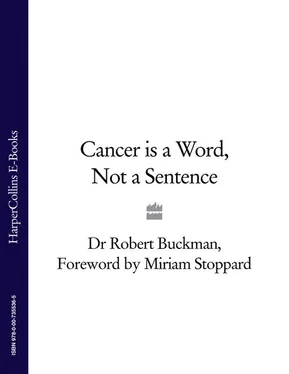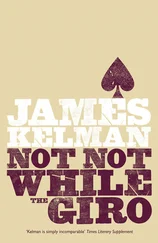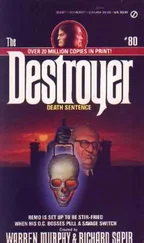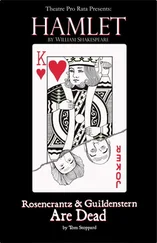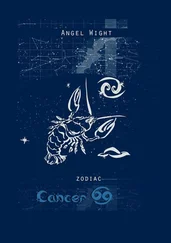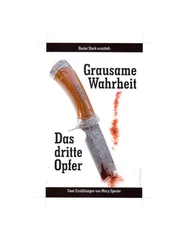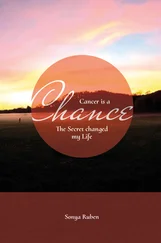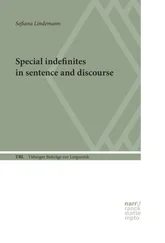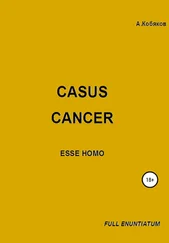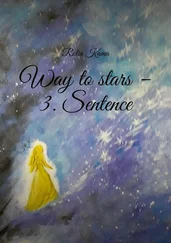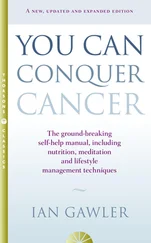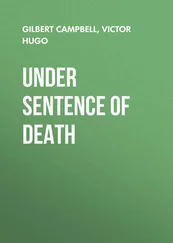Many people find that they have dozens of questions running through their minds when they are given a diagnosis of cancer. The two most frequent questions which go round and round in their thoughts are:
What does this diagnosis actually mean in my case?
What’s going to happen? (In other words, what does the future hold?)
Often, you may find that those questions can’t be answered with certainty. With the best will in the world, even the most experienced doctor can’t predict precisely what is going to happen to every single person with a cancer, or how every individual case is going to turn out.
But it is often possible to explain in general terms what the situation looks like, and which aspects of the tumour have the greatest bearing on what’s likely to happen.
This book will show you the path that you’ll travel in the first few weeks, and shed light on the various tests and the several uncertainties that you’re likely to encounter along that path. I hope that this guide will help you to understand and cope with what’s going on.
Understanding is the beginning of coping
Getting your balance back is the start: and it’s the beginning of a process by which you build up your own coping strategies—the personal psychological mechanisms and devices that you use (as do we all) to cope with shocks and bad news. By the time you’ve read through this book you’ll find that you can put your own personal diagnosis and medical plan into some form of perspective. A cancer diagnosis almost always makes you feel overwhelmed, often helpless, and almost paralysed at first. The information, hints and tips in this guide will make it easier for you to understand what’s going on and how to cope with it.
When it comes to coping with cancer, the cure for that nasty feeling of paralysis is understanding. It’s the first stop on the way to getting your situation into perspective and putting your own ‘You Are Here’ sticker on the map.
A guide to this guide
This book consists of this introductory chapter, six Parts, a section of Tables, and a directory listing sources of further help.
Part One, ‘What’s going to happen to me next?’ is the equivalent of the large-scale map of the main routes. It gives you the broad overview of how things are arranged, and how they happen.
In Part One I start by explaining the basics: what cancer actually is (or rather, what the cancer process actually is), and how the cancer process is a feature common to the two hundred or more different diseases that we call the cancers . I also explain that most of those different diseases have little in common with each other, apart from sharing the basic cancer process.
After that, I set out the six basic steps of planning and coping, from the moment of diagnosis onwards. This part is basically the map of how cancers are diagnosed, assessed, and then treated, with explanations of why follow-up is so important and how to cope with the anxiety it often produces.
What you will find is that there are clear and straightforward explanations of the various (often mystifying and bewildering) tests, results, discussions, treatment plans, and so on; and also a detailed strategy for asking the right questions to get a real understanding of your situation.
Part Two, ‘What’s treatment like?’ explains the four main types of treatment used in treating the cancers—surgery, radiotherapy, chemotherapy and biologic agents—and explains how treatment is constantly being improved by research studies called clinical trials . This part concludes with some practical tips about communicating with your medical team: who the various members are, and some guidelines for discussing potentially awkward situations, such as your feelings and requests for a second opinion.
Part Three, ‘Isn’t there an easier way?’ deals with complementary medicine. It will help you weigh and assess the many alluring claims made for remedies that are said to be active in treating cancers while not producing side effects. I believe that it is very important to think clearly about why you want to try complementary remedies and what you might expect from them.
Part Four, the all-important ‘How do I get back on track?’ is all about recovering: getting back to normal, or nearly, after and during treatment. Here you will find some general guidelines to help you restore some order and balance to your life, plus a section on how to talk with other people, including your friends and relatives. I have also included a section specifically for your family and friends, setting out some guidelines on how to talk to you.
Part Four continues with discussions of spirituality and religion, and then sexuality and dealing with sexual problems that are quite common after cancer diagnosis and treatment. It concludes with a section on hope: what it means and the many different forms it can take.
Part Five, ‘Do I always have to have a positive attitude?’ deals with a widely debated topic: cancer and the mind. Here you will find a discussion of the many claims and statements made about the effect of the mind on the cancer process itself, including a review of several major studies which have been done on this subject.
Part Six is called ‘What can I do to help myself?’ and you will be glad to know that the first section of this part is called ‘You’ve already started’. Here, I summarise the process of regaining control over what seems at first an arbitrary and uncontrollable situation, and I conclude this part with the most important statement about the value of support: you are not alone .
Then, the section of Tables provides detailed descriptions of various drugs, tests and procedures.
Finally, in Appendix II on page 240 you will find a list of national organisations and their websites, plus some other internet sources that are trustworthy and credible, as well as a list of useful books.
Конец ознакомительного фрагмента.
Текст предоставлен ООО «ЛитРес».
Прочитайте эту книгу целиком, купив полную легальную версию на ЛитРес.
Безопасно оплатить книгу можно банковской картой Visa, MasterCard, Maestro, со счета мобильного телефона, с платежного терминала, в салоне МТС или Связной, через PayPal, WebMoney, Яндекс.Деньги, QIWI Кошелек, бонусными картами или другим удобным Вам способом.
